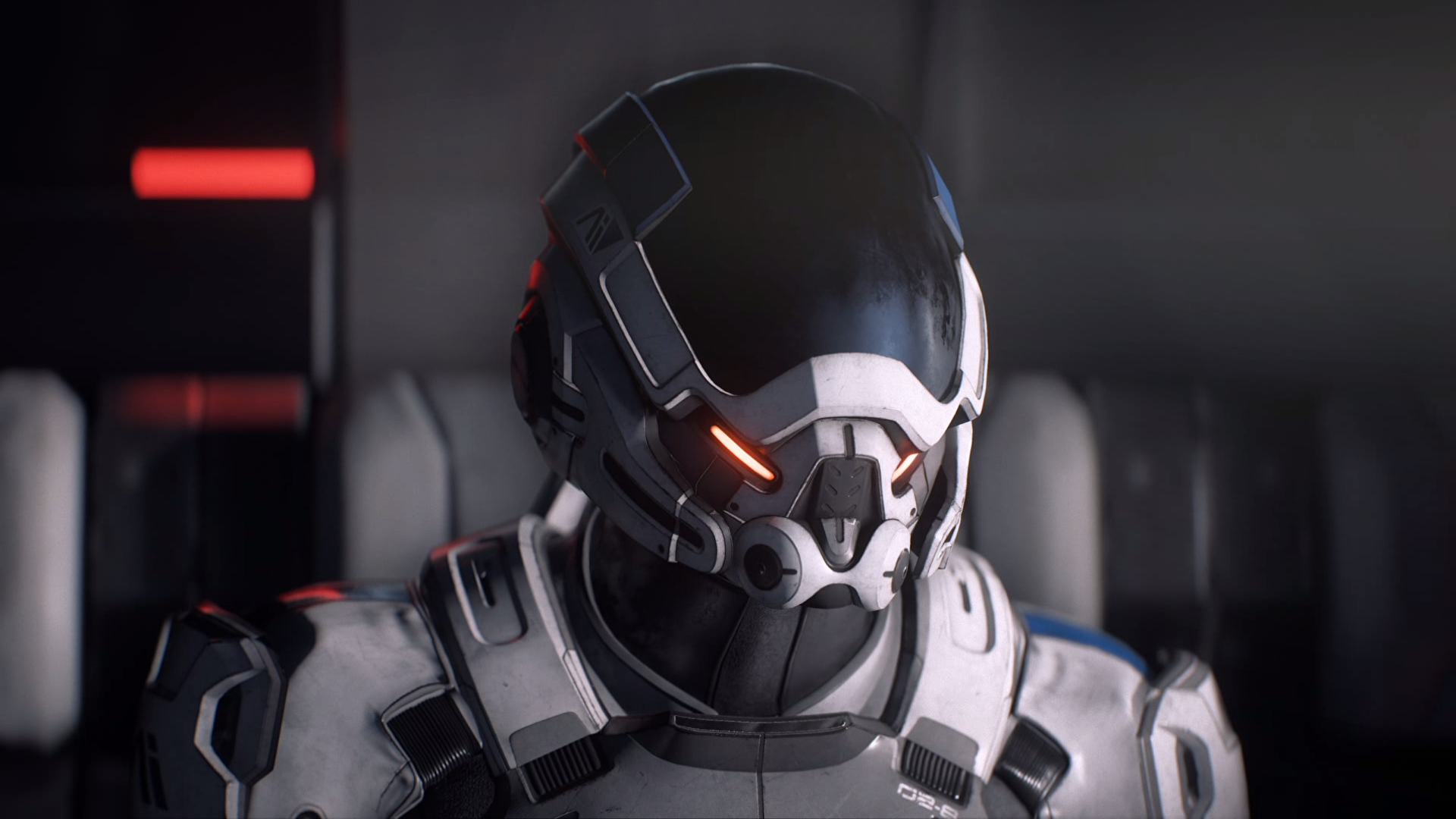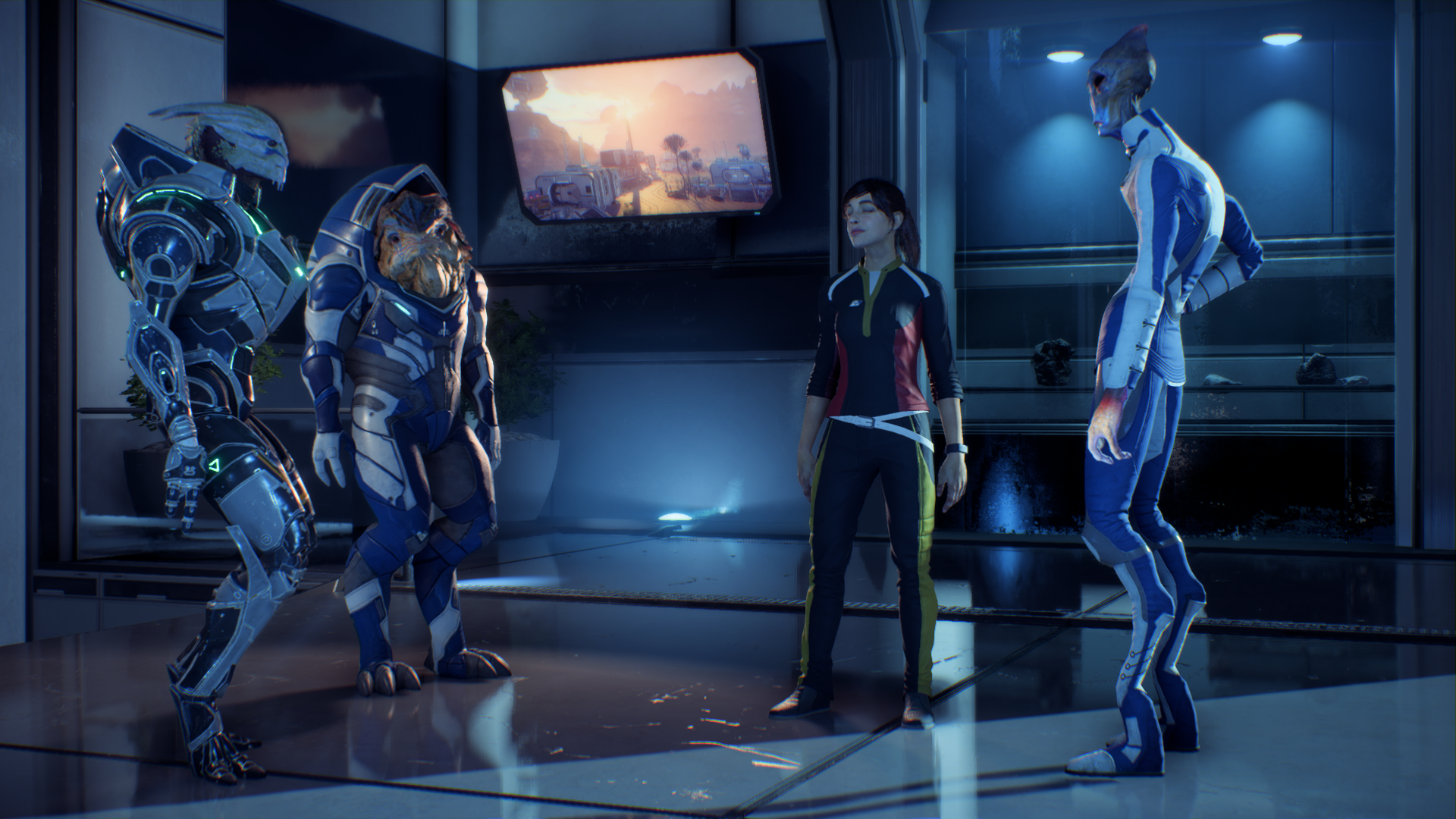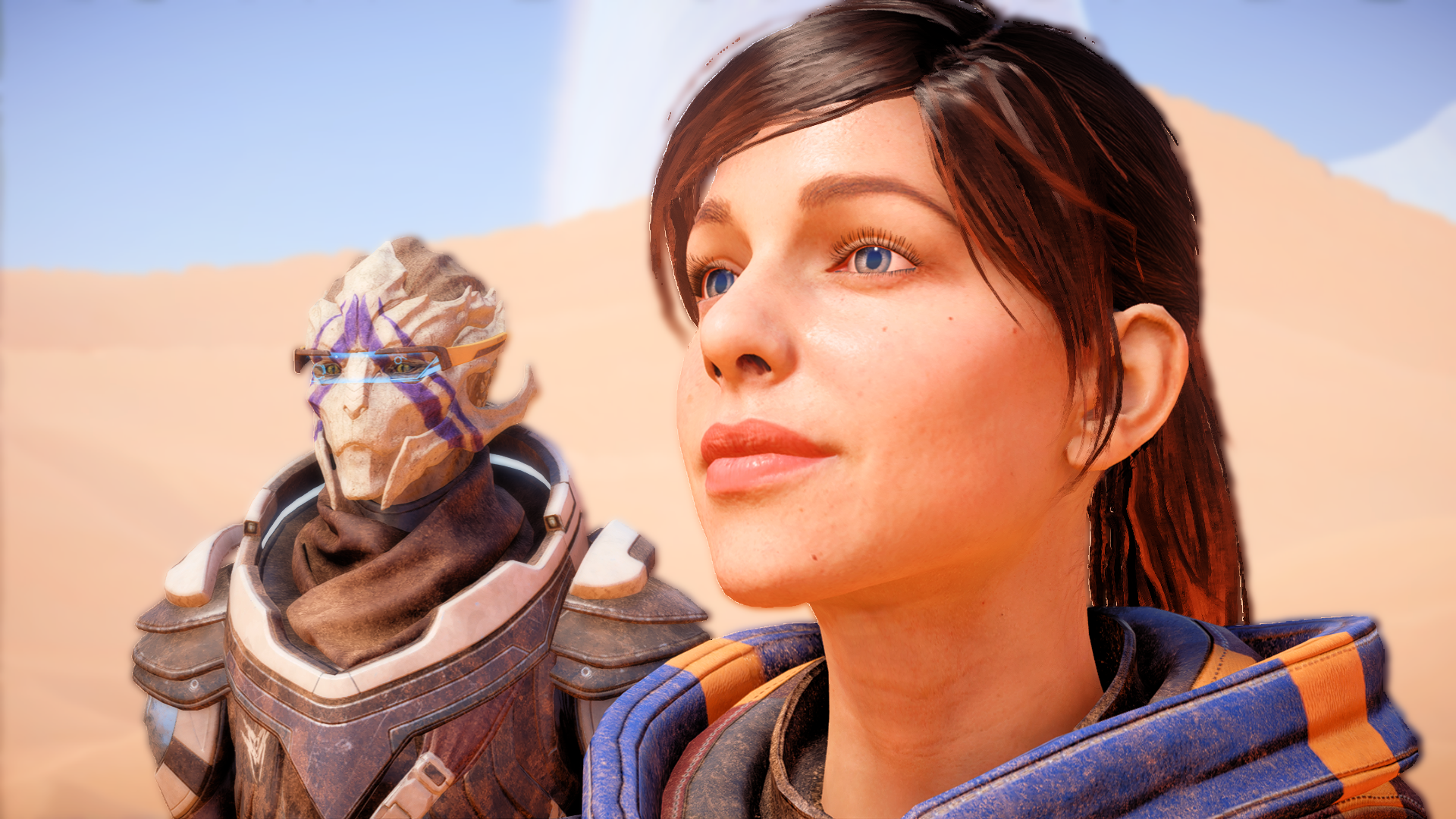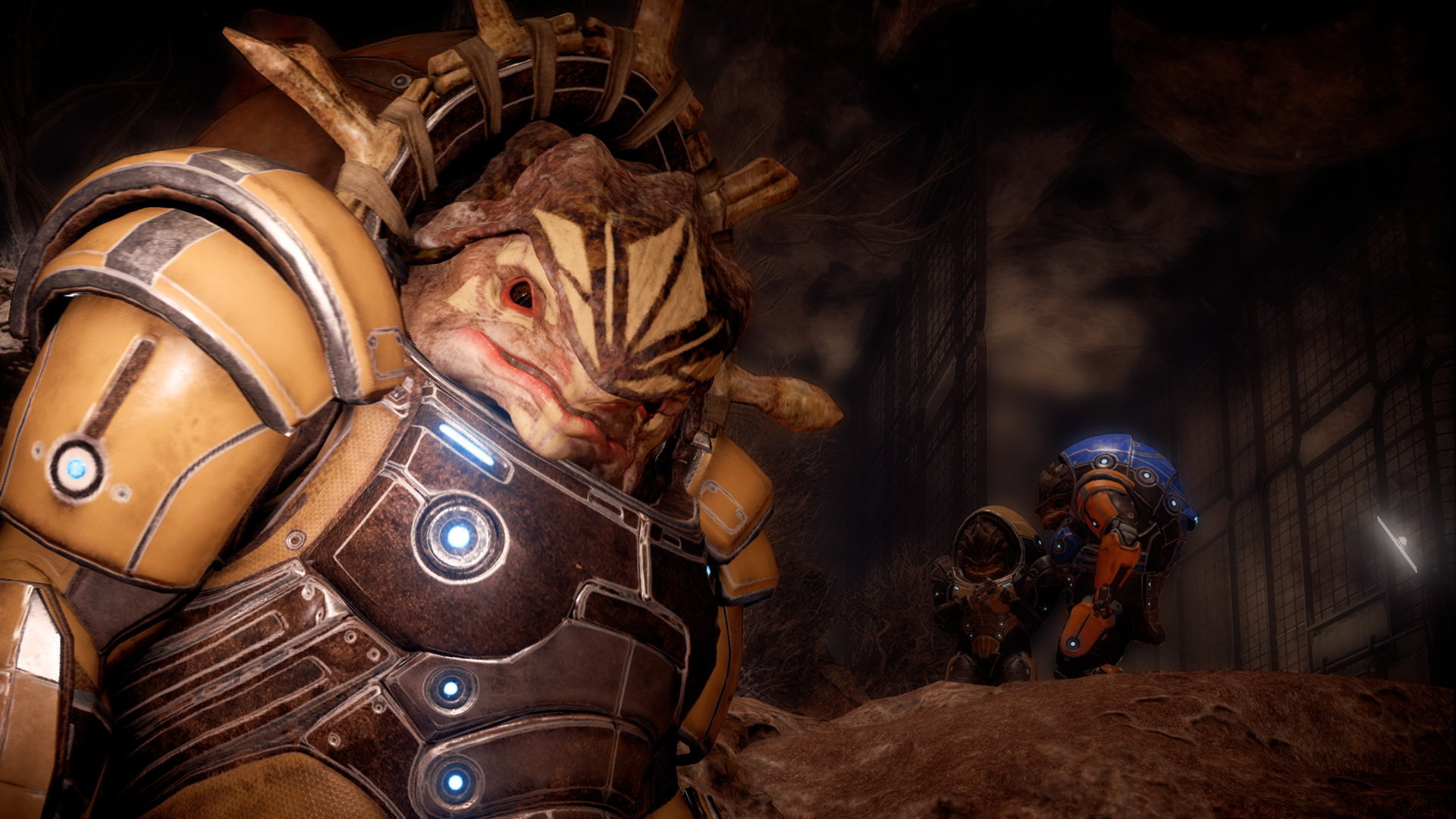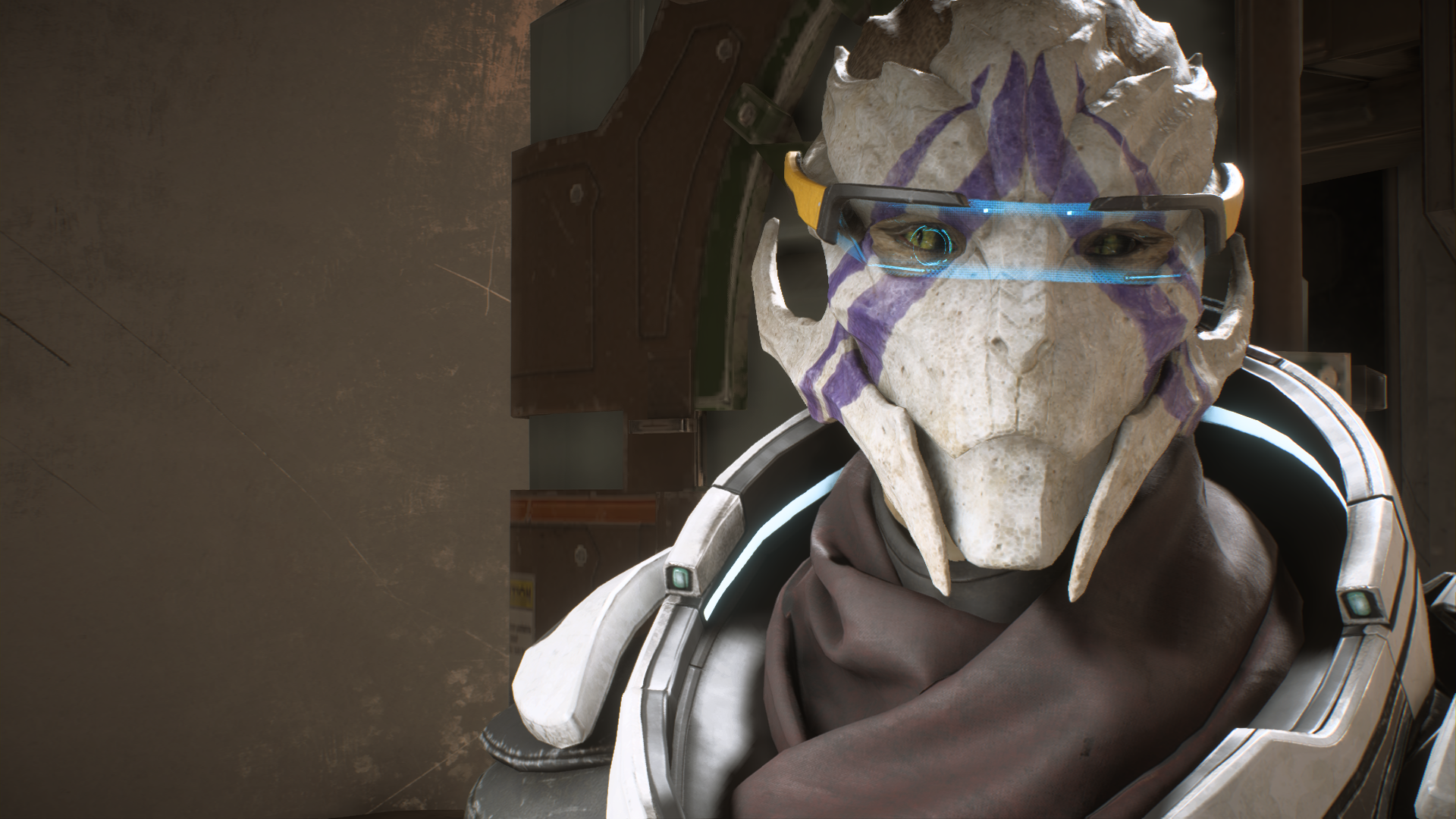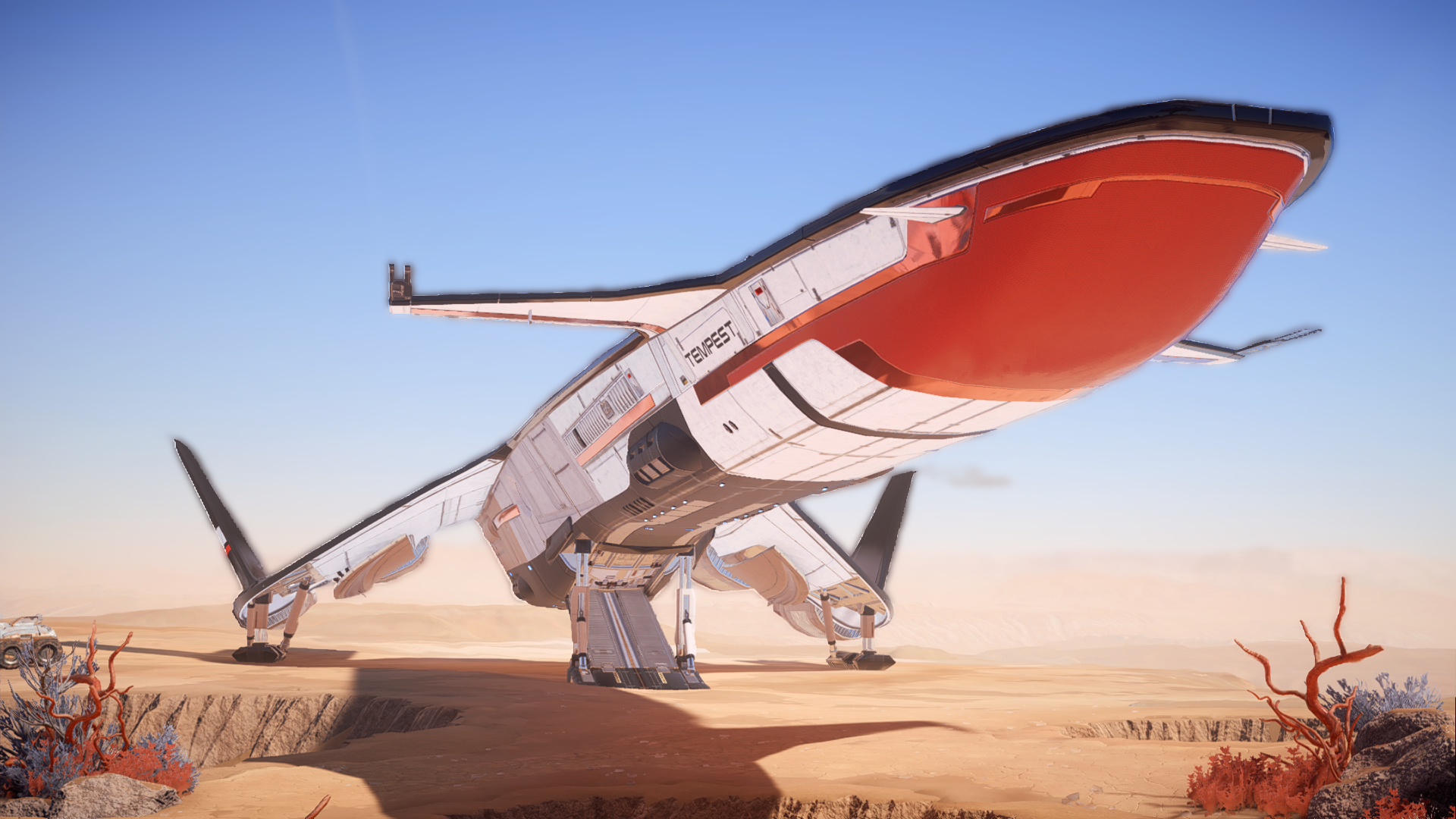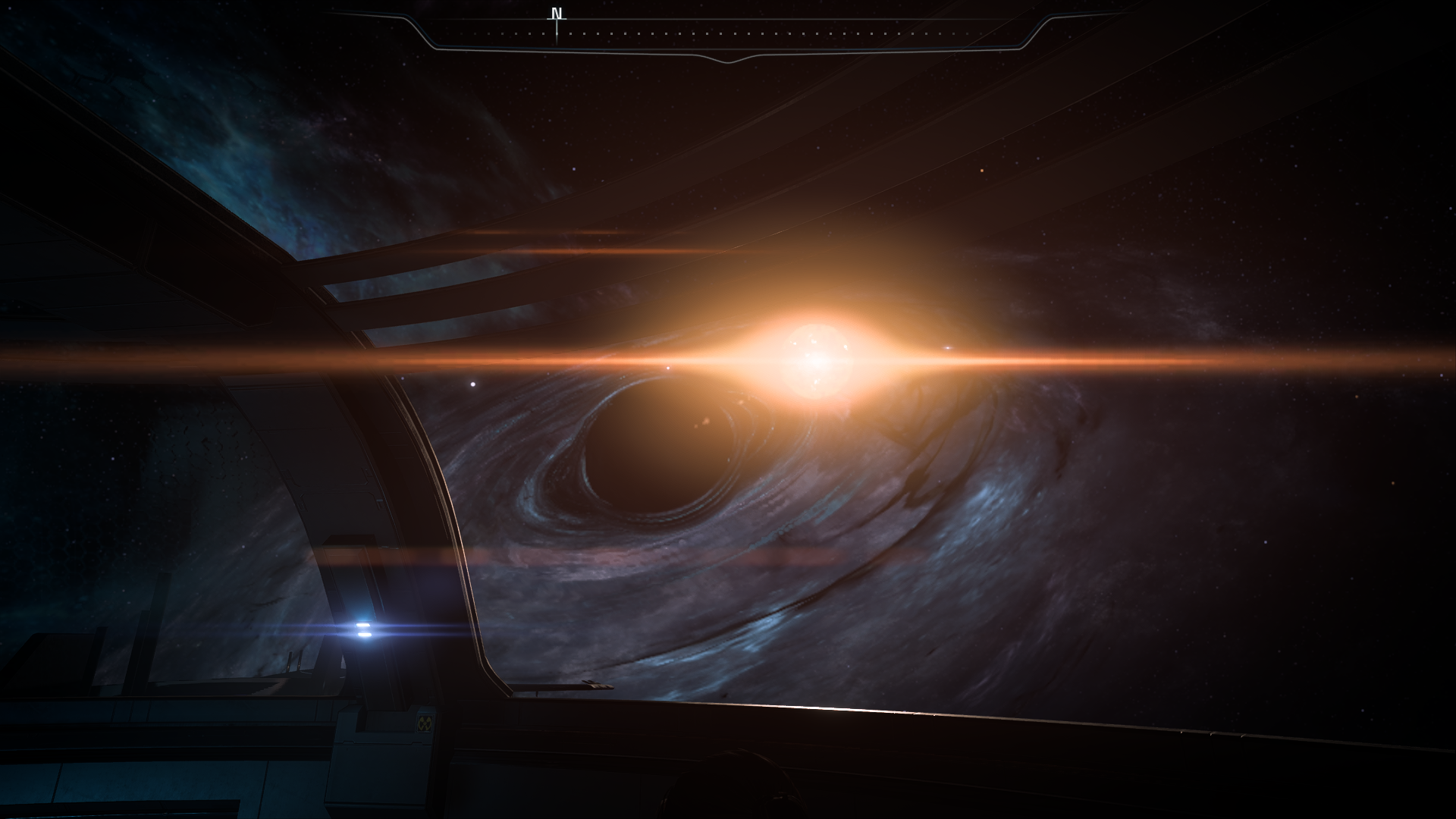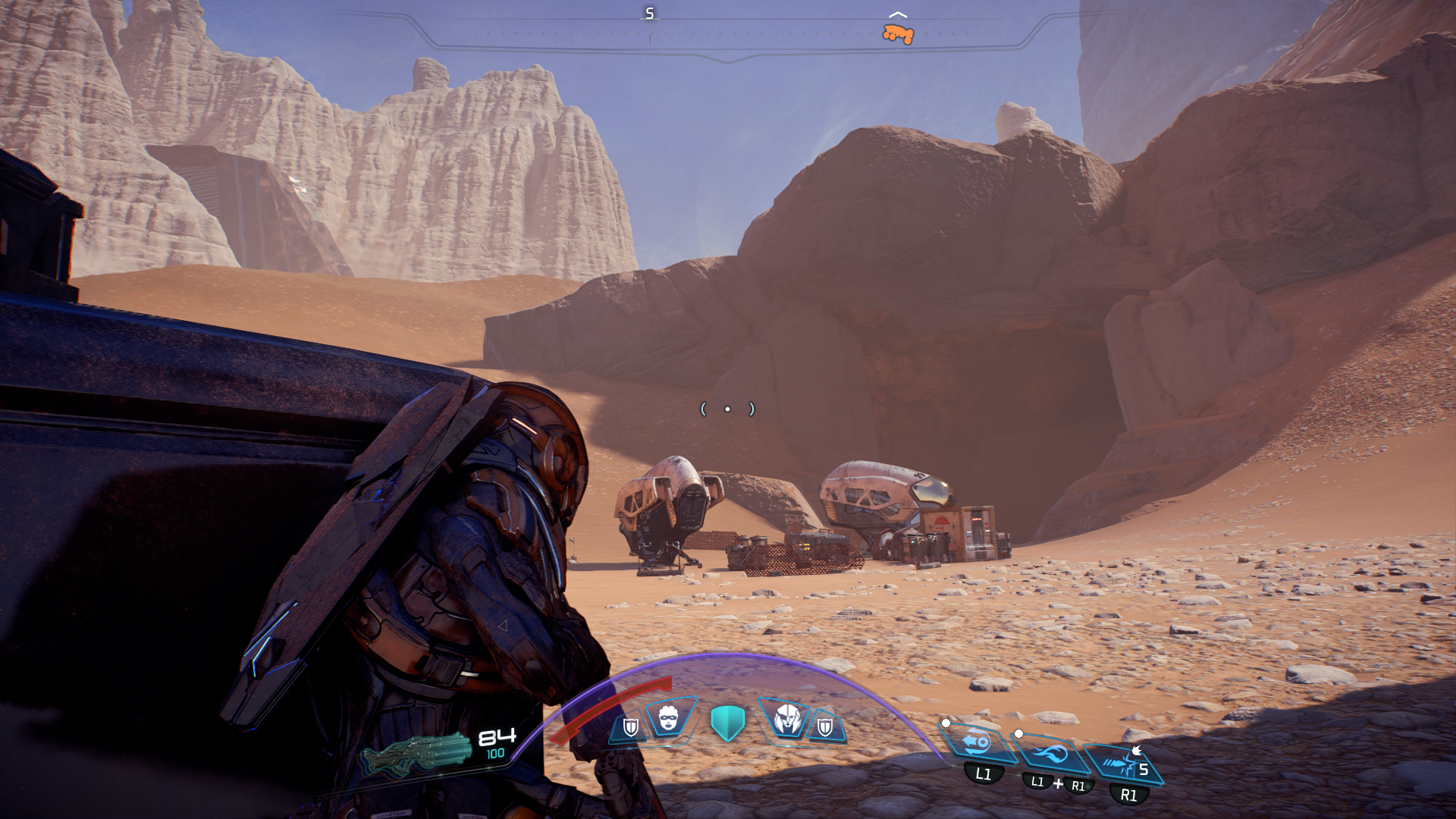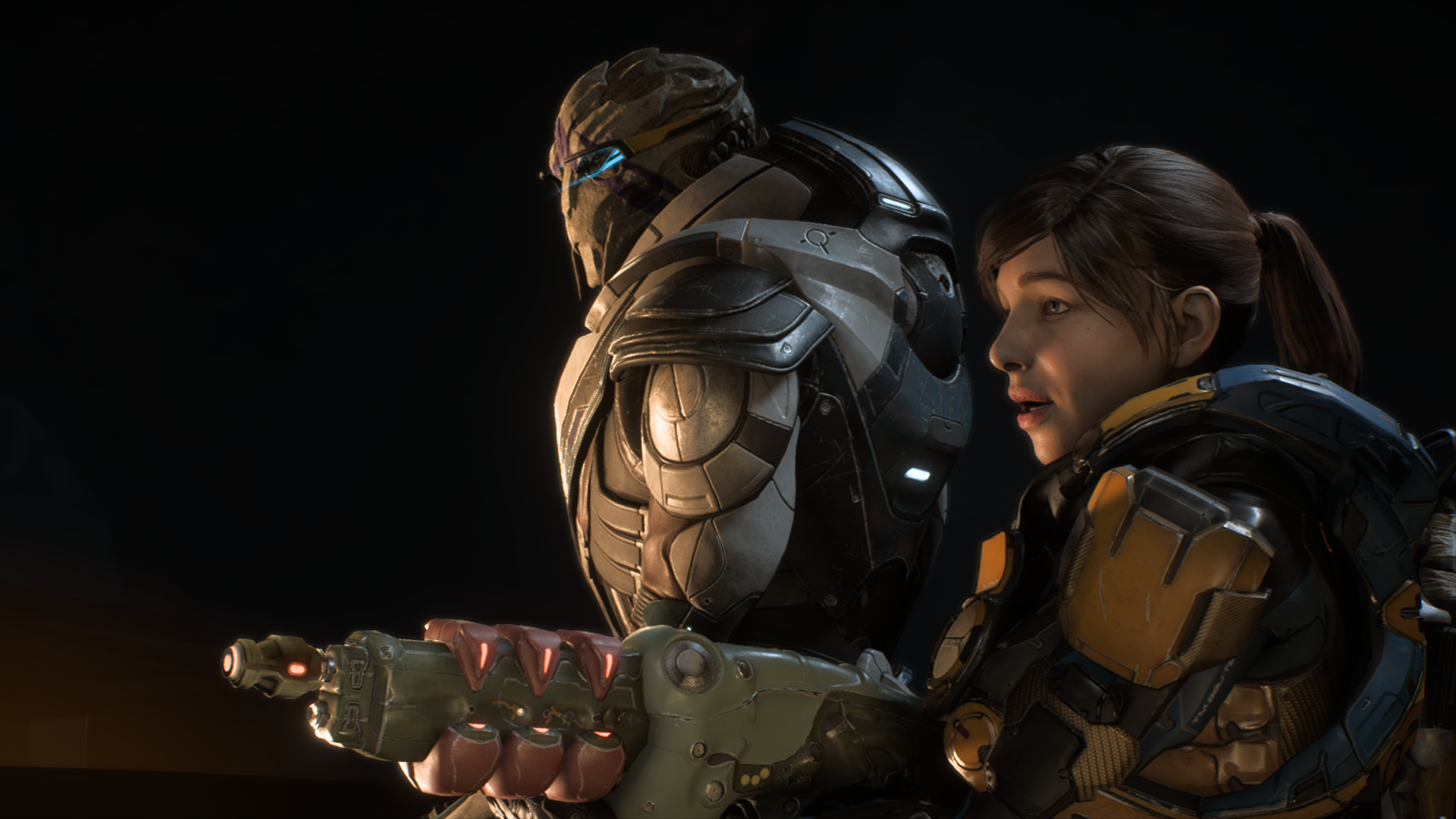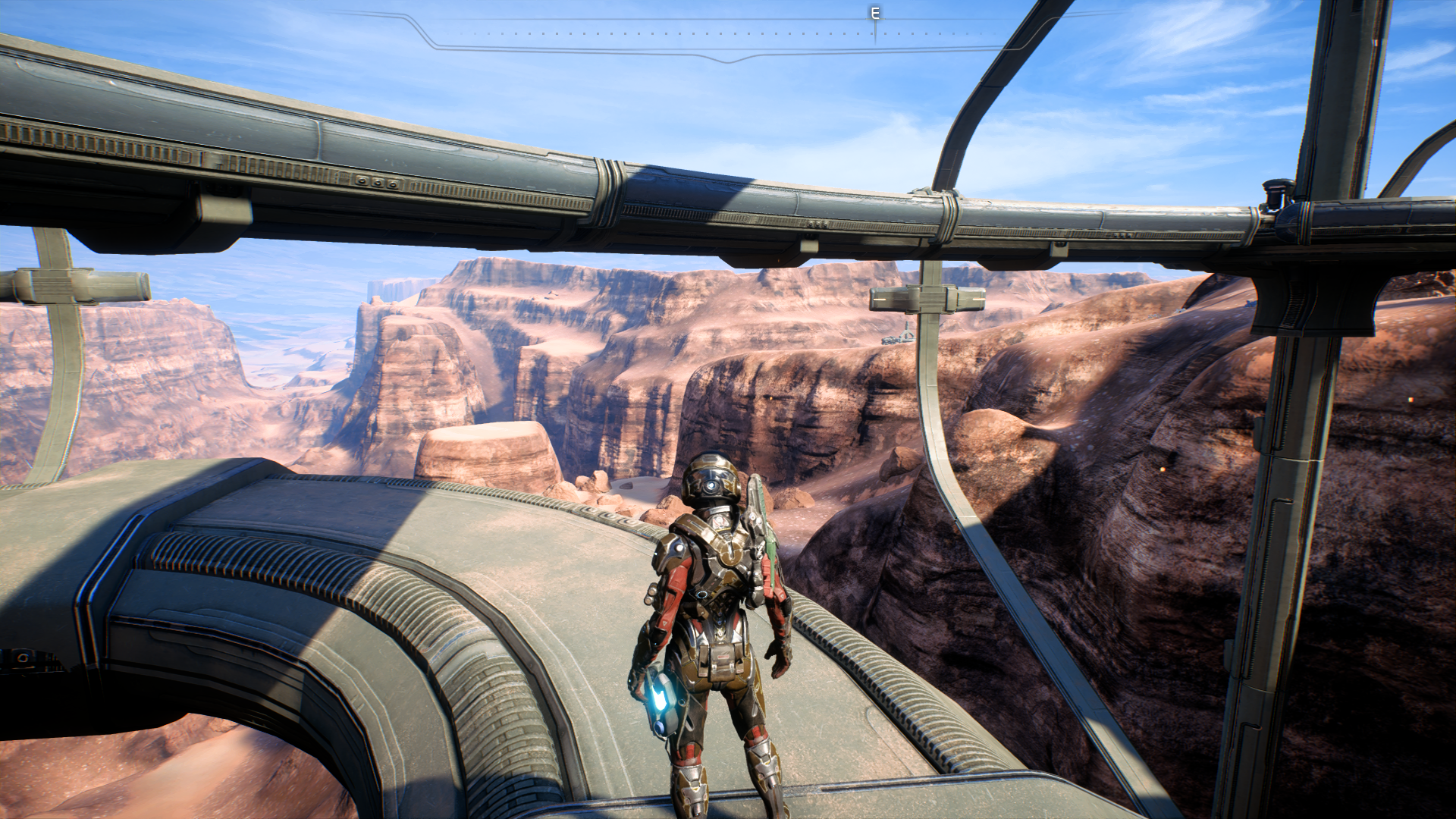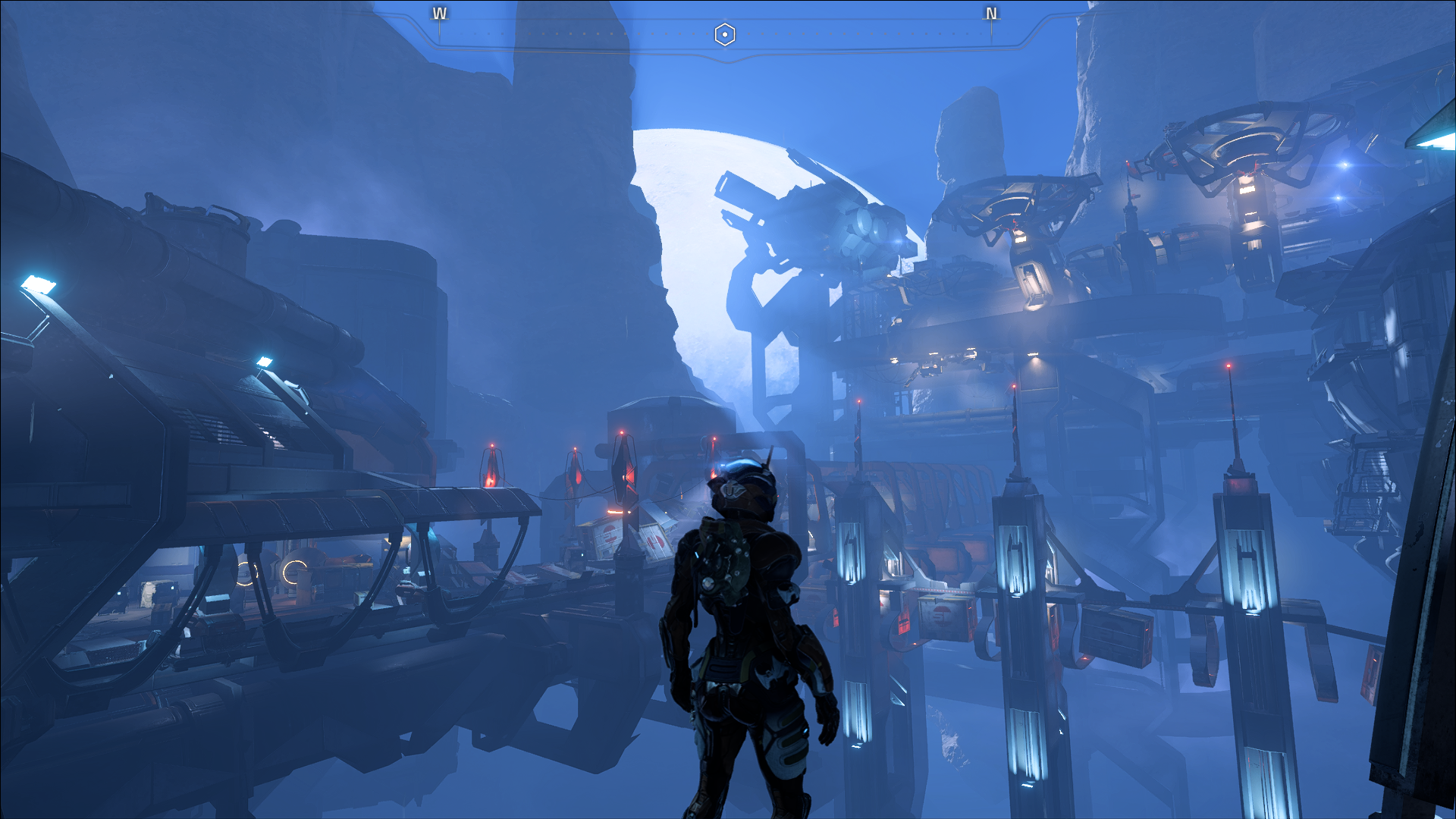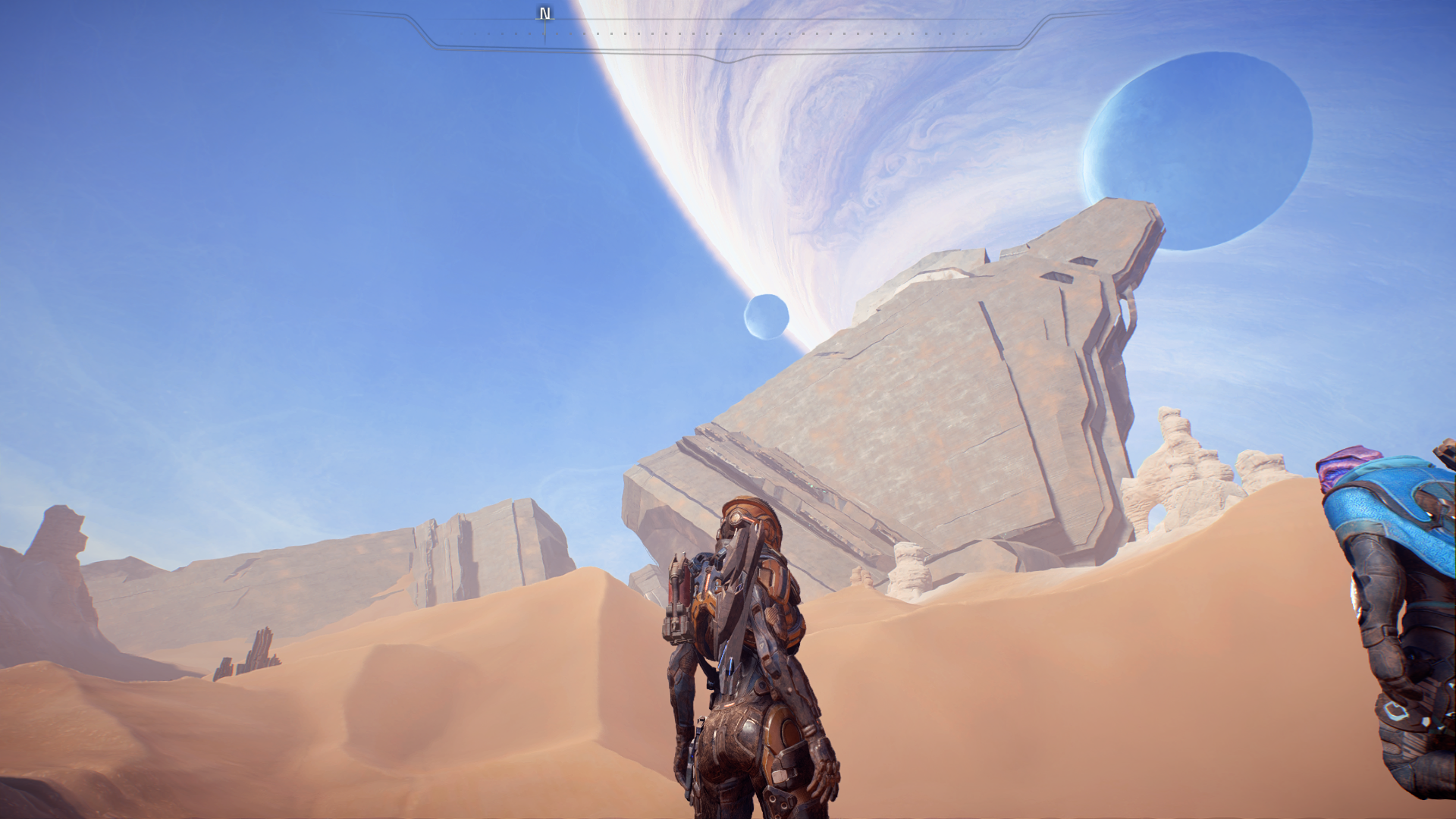Mass Effect: Andromeda was a video game I literally dreamed about in the years leading up to its release. It was a game I fantasized about when I was bored, and one that I rested a lot of my hopes on. In the end, it didn’t make all my dreams come true, but some of the ideas that Bioware Montreal realized in this game put a sincere smile on my face and made me very happy that this entry exists. I want to talk about the things this game did well, and why it is a genuine shame that Bioware Montreal will never get a chance to make a follow-up.
At the time of writing this, I’m looking at the Mass Effect Andromeda art book. Many of the best ideas present in the concept art never blossomed into the actual game, indeed, a lot of the early high level ideas that were rumored to be part of the game never came to. But there are kernels of brilliance in Andromeda. Brilliance that only makes me yearn for the great potential held within.
The game never popped into the crunchy robust and satisfying space adventure that so many fans hoped it would be. To end the popcorn analogy, the game was mired in too much oil and fat and just wasn’t cooked long enough. But this is a defense of Andromeda after all, and I truly believe that there are many things in this game to defend. So, with the obvious negatives out of the way…
The Game had Courage.
After the enormously disappointing ending of Mass Effect 3, the future of the series was left uncertain. And most fans speculated that if the series had a future, it would be in the past, in the form of a prequel. Ideas floated around of retelling humanity’s First Contact War after discovering the Relays. But Andromeda took an almost universally disliked ending to the trilogy and moved past it, way past it. Taking place about 600 years after the events of the trilogy, it allowed both angry fans and stuck developers a way to explore more Mass Effect without being tangled up in the mess of 3’s ending or the boredom and low stakes of a prequel. Especially after many other beloved game series had also wrapped up around the same time and had opted to then make prequels instead of moving their series’ forward. I’m looking at you, Gears of war Judgment, God of war Ascension, and Borderlands the Presequel, among others.
Andromeda dared to try something new, and do it on new hardware. The team at Bioware Montreal also were not afraid to revisit and reconsider many of the staples of the trilogy: the mass relays, settings, aliens, armor, gameplay loop, and upgrade system. All of these things didn’t remain the same for tradition’s sake, but were entirely changed, or tweaked with the new motif of exploration in mind. What is more, the game was built on the FrostBite 3 engine, the first Bioware game to do so, as Inquisition was built on a modified FrostBite 2. This fresh engine meant that assets and systems had to be built nearly from scratch, a nightmare for any game studio. My point in this first section is that the very foundation of Andromeda is built on taking risks, rather than making a safe game in the same timeline, same engine, and same console, like so many other games at the time opted to do.
A Shift from Space Opera to SciFi
Much of the original trilogy obviously rests on the mass effect technology that makes the setting of the games possible. But past that, the plot and characters were driven by art style and story, an admirable art style and good story. But the mark of good science fiction is allowing the technology in your universe to be the mirror on which your plot rests, and against which your characters are reflected and warped. In this way, the trilogy is more of a space opera, and is perfectly enjoyable as one. But the science fiction fan in me always wanted more. I wanted to see the inner workings of the armor, I wanted to see more naked aliens, the ugly ones, and more sexual dimorphism among them. I wanted everything to feel more tactile and for the technology and biology to be more present in the graphics, story, and gameplay.
Long before the release of Mass Effect 3 my mind would race thinking about how the series could more seriously integrate the sciences of its world and pull it off of the codex and onto the stick. Now, Andromeda certainly did not make all my wildest dreams come true in this area, but did go a lot further to show its science rather than tell.
Great Alien Faces
My favorite example of this focus is how the aliens were treated in the game. The salarians are tall and literally look down at you and the other races, as they always have figuratively. This height difference may seem silly to get excited about, but when designing aliens any biological feature to differentiate is important, and a human having to crane their neck up to speak to an alien is always fun to see. The female Krogans look distinct from the males and maintain their reptilian bulky frame. The Turians are skinny and bony and finally resemble birds as the artists originally intended. The Angara are rather mediocre in their design, but do excel in one way: the eyes. The Angara have speckled cat like eyes that feel deep and at times mesmerizing. Salarians have enormous shiny black eyes that are at once buggy, unnerving, and soft. The turians have tiny avian eyes embedded in their bony faces. They finally look like they are targeting you and reading you the way that they usually are in conversation. The krogan have sunken wrinkled battle hardened eye sockets with vertical pupils that betray their exhaustion, menace, and at times such as with Drack and Kesh, a rare intelligence and comradery. These aliens even have unique mouths and smiles and teeth. The variety of faces within any given species is low, but the quality of faces that are present excited me. The humans and asari however leave much to be desired in terms of uniqueness and design, as they always have, unfortunately. And admittedly, the Kett are disappointing in every way including appearance. Especially when considering some of the genuinely creative designs present in the concept art.
I know many of these details were already present in the trilogy, but they were given a care and attention in this game that most developers working from scratch would have foregone in lou of the bigger game pillars. And this attention went a long way to realize the biology of this universe.
Armor and Vehicles: Practical and Sleek.
The armor of Andromeda was one of the first things ever shown leading up to the game’s media campaign. And for good reason, a lot of time and thought was put into how explorers with limited resources would wear armor. It was also a showcase of how the team at Montreal was developing armor differently than in the past. This time around characters wore a visible base layer of softer cloth like material, on which the protective modular armor pieces were attached. This meant that character models in armor were more flexible and were much less subject to clipping. It also gave a tactile diversity to the different suit elements. Cloth, rubber, metal, and fiberglass elements of your character looked photo realistic and practical, stretching, and reflecting light individually. Seeing your character up close was eye catching to me, similar to the impressive armor in The Witcher 3. And just as Geralt’s armor made him a real flesh and bone fighter in a fantasy world, Ryder’s armor makes them a flesh and bone spacefarer in a scifi universe. the clear glass bubble design of the helmets also lended to the realism of Ryder’s equipment, complete with in helmet lights to illuminate your character’s face. Alien armor was dealt with similarly and only continued to endear me to all the species.
The Nomad was treated with an equal level of material fidelity and was fun to drive around in or just stand next to. I especially liked the gimmick of shifting from 4 wheel drive to 6 wheel drive. I understand if some thought it an arbitrary obstacle to getting around, but that ability to shift gears made it feel like I was driving a piece of equipment, space equipment! It also meant I couldn’t mindlessly drive to my destination, keeping me engaged and attentive to my landscape. It was a small and arguably silly touch, but one I appreciated when I’d shift gears for a boost in traction up a hill, only to shift back for speed when cresting over the hill. And then of course the ability to jet boost and jump only served to make the Nomad feel more capable, sturdy, and techy, while also retaining a simple gamey fun factor.
Another noteworthy addiction to the armor and vehicles is the added detail of soot, snow, sand, and rain that would accumulate over time. It is a detail that grounds your character and vehicles to their location and keep the crucial consistency of the world.
French Bay Windows to Space
The Nexus, the Hyperion, and the Tempest. All these ships have decent interiors: well modeled, cozy, techy. And they each have huge windows with an unobstructed view out to space that never got old for me. This view was a detail I wanted so badly in the trilogy, and it was fully realized in Andromeda. The Nexus and Hyperion have great windows on their own, with angles that let you see the complex and sleek exteriors of the ships, as well as the colorful and quiet space beyond. But the Tempest windows are on another level entirely. I know it was tedious to travel between points of interest in real time. But going all that way to a planet, or space junk, or a comet was so worth it when you could step back from your console and see that celestial object from nearly every window. It made me grin every single time. And the cherry on top was that the interior of your ship was dynamically lit by the object. Park the Tempest in front of a red giant and your cabin would be bathed in red light. Do the same in front of a comet, and a brilliant blue would flash onto the bulkheads. Everything you could park in front of lit the Tempest and firmly rooted Ryder’s ship in that point in space. It was a feature I wanted in video games for so long, and it made the quiet times before a planetside outing as ominous, serene, and beautiful as space in scifi should be.
Movement and Combat
Andromeda’s combat is a bright spot in a lot of game reviews, and for good reason. While it has some setbacks like a soft cover system and boring enemies, and in my opinion too few abilities, the movement options gave the freedom to have fun in otherwise unremarkable combat scenarios. By adding the ability to jump, hover, dash, and grab onto ledges Andromeda makes the baseline gameplay engaging. The jump pack has a satisfying look and feel as it thrusts you upwards or keeps you hovering aloft while you aim. It makes me feel like a true explorer who is vertically capable. Taking on enemies from ledges or escaping them just by jetting your way to the roof of the building they were just shooting at you in puts the pace of combat in your hands and gives you a much better mastery of the combat arena than the trilogy could allow. The added touch of a biotic jump, dash and hover if you mostly invest in biotic abilities is another detail that makes your choice in upgrades matter. Even though I much prefer the kinetic jump jets. The sound of them too are satisfyingly scifi: a quiet but powerful ‘pffft’ mixed with a synth ‘zap’ that sells the efficiency and horsepower of future tech.
The weapons and abilities in Andromeda also give you a surprising amount of freedom. You could craft a sniper rifle that fires sticky bombs, or an assault rifle that shoots electricity, or a shotgun that blasts lasers. Add to that the profile system that allowed you to change up your playstyle and ability loadout and you could make a respectably unique character without even choosing a dialogue option. I was impressed with Andromeda’s combat and sincerely enjoyed running, jumping, and dashing my way around.
The animations also felt responsive and smooth. The character had just the right amount of weight to them, resisting the stick just enough to keep from feeling floaty, but still managing to feel light and able to change directions and stop on a dime. This was especially satisfying in the Remnant vaults and other platform heavy sections of Andromeda, sections that were fun to me because my character felt like an agile explorer.
Final Thoughts
Andromeda was a sincerely ambitious game. And I love it for that reason. Bioware Montreal had years of development trouble and in the end took on a project that swallowed them. But at times, Andromeda played the part, and at many times looked the part. This game is beautiful. Some landscapes are impressive in how alien they look, especially Remnant architecture. And many of the more terrestrial environments were impressively realized, my favorite being the sun bleached desert of Elaaden. Though I am a sucker for huge deserts in videogames. That’s not to say Andromeda was wildly creative in its locals, in fact I was pretty disappointed in how familiar the Helius cluster looked. But many of the settings that were offered had plenty of wonder and intrigue in them. I was always ready to find a new location just to see the color palette on offer, and even more ready to dive into the Remnant Vault hidden beneath the surface.
The sound design of the Remnant Vaults were also chilling and eery, while everything else in the game had very respectable and middle to high quality sound effects and music. Especially the ship engines, weapons, and the phenomenal bellow a vault gives when it opens its doors to you.
For these reasons, and more, Mass Effect Andromeda has my heart. I do not think it was a great game. It was one of my most hyped games of all time, as I said, I would dream about this game before release. And as such, it did disappoint me. But it has greatness hidden throughout it, and the quality of the game increases steadily to the end. It was genuinely hard to hear that Bioware Montreal was dissolved. Given a second try, armed with 5 years of development experience, I believe that team could have made something truly special out of Mass Effect’s future.
What do you think about Mass Effect Andromeda? Did it have redeeming qualities to you? Or did you find it an unsalvageable heap of space junk? Extend an olive branch in the comments below.
